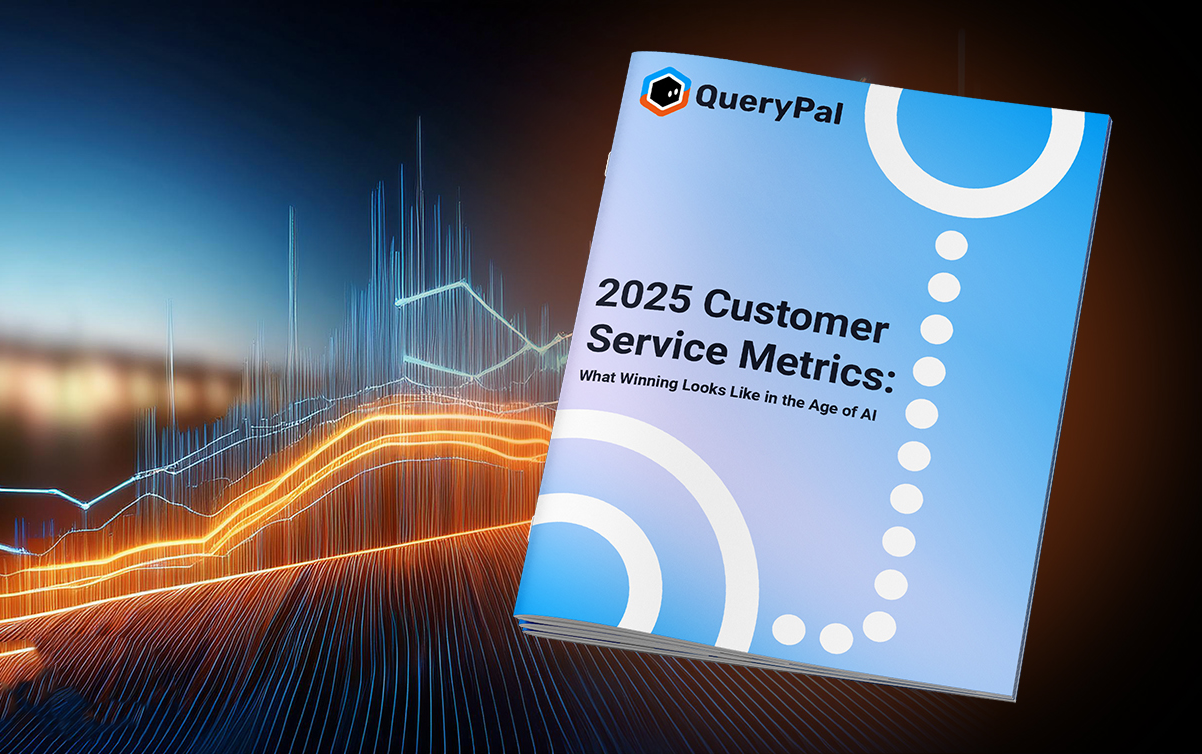September 9th, 2024
by QueryPal team
In today's fast-paced digital age, customer service response time has become a critical factor in determining customer satisfaction and loyalty. The tools of today will quickly be considered obsolete (and even a detriment to your business) if they can’t keep up with the latest advancements such as AI customer service emails, or email automation.
A quick and effective response to customer inquiries can significantly enhance the overall customer experience, while slow or unresponsive service can lead to frustration and churn. Here are some strategies to improve customer service email response time, which focus on key performance metrics and practical tips to enhance overall customer satisfaction.
Understanding the Importance of Response Time
Customer service response time directly impacts customer satisfaction (CSAT) and Net Promoter Score (NPS). Studies have shown that customers expect a response within 24 hours, and a delay beyond this timeframe can significantly erode trust and loyalty. Additionally, a quick response demonstrates that the company values its customers and is committed to addressing their concerns promptly.
Key Performance Metrics to Track
To effectively measure and improve customer service email response time, it's essential to track the following key performance indicators (KPIs):
- Average First Response Time (AFRT): The average time it takes for a customer service agent to respond to a customer's initial inquiry.
- First Contact Resolution (FCR): The percentage of customer inquiries that are resolved on the first contact.
- Customer Satisfaction (CSAT): A measure of customer satisfaction with the service received.
- Net Promoter Score (NPS): A metric that measures customer loyalty and willingness to recommend the company.
- Email Abandonment Rate: The percentage of emails that go unanswered.
Strategies to Improve Response Time
- Prioritize and Route Inquiries Effectively:
- Implement a ticketing system: Use a robust ticketing system to track and prioritize customer inquiries based on urgency and importance.
- Assign tickets to appropriate agents: Ensure that inquiries are routed to agents with the necessary expertise to handle them efficiently.
- Set up automated routing rules: Use automation to automatically route inquiries to the correct department or agent based on specific criteria.
- Leverage Automation and Technology:
- Optimize email automation: Develop pre-written email templates for common inquiries to speed up response times.
- Use AI-power: Employ chatbots to handle routine inquiries and AI customer service emails to provide immediate responses to common questions.
- Implement knowledge base articles: Create a comprehensive knowledge base to address frequently asked questions and provide self-service options.
- Optimize Workflows and Processes:
- Streamline processes: Identify and eliminate bottlenecks in your customer service workflows to improve efficiency.
- Set clear response time goals: Establish clear response time goals for different types of inquiries and hold agents accountable for meeting these targets.
- Monitor and analyze performance: Regularly review and analyze performance metrics to identify areas for improvement.
- Foster a Customer-Centric Culture:
- Empower agents: Give customer service agents the authority to make decisions and resolve issues without seeking approval.
- Encourage empathy and understanding: Train agents to empathize with customers and understand their needs and concerns.
- Measure and reward performance: Recognize and reward agents who consistently exceed expectations in terms of response time and customer satisfaction.
Additional Tips
- Set realistic expectations: Communicate realistic response times to customers and manage their expectations accordingly.
- Provide progress updates: If an issue cannot be resolved immediately, provide regular updates to keep customers informed.
- Offer self-service options: Empower customers to find answers to their questions independently through a well-organized knowledge base or FAQ section.
- Monitor social media: Keep an eye on social media platforms to identify and address customer inquiries promptly.
By implementing these strategies and continuously monitoring performance metrics, you can significantly improve customer service email response time, enhance customer satisfaction, and drive business growth.
Get the Guide: Download QueryPal’s comprehensive guide on improving customer service performance metrics to learn more about best practices and strategies for success.


